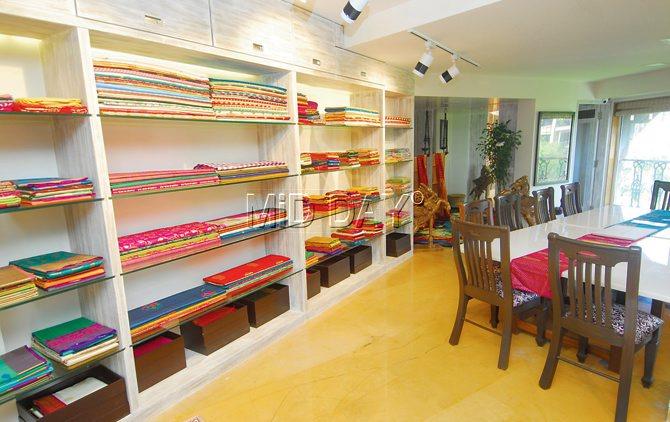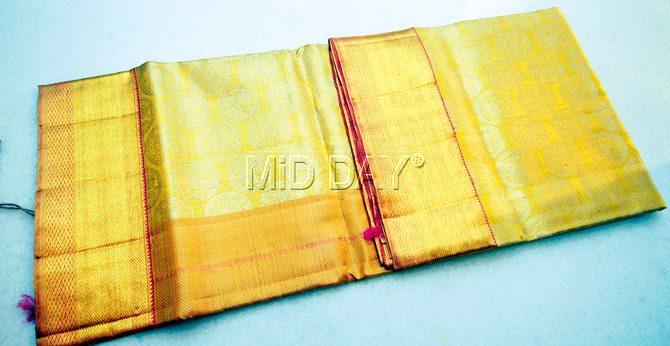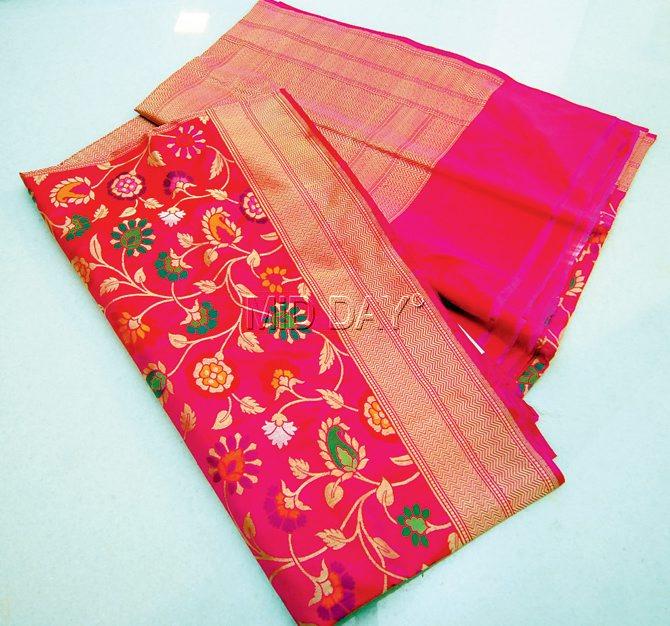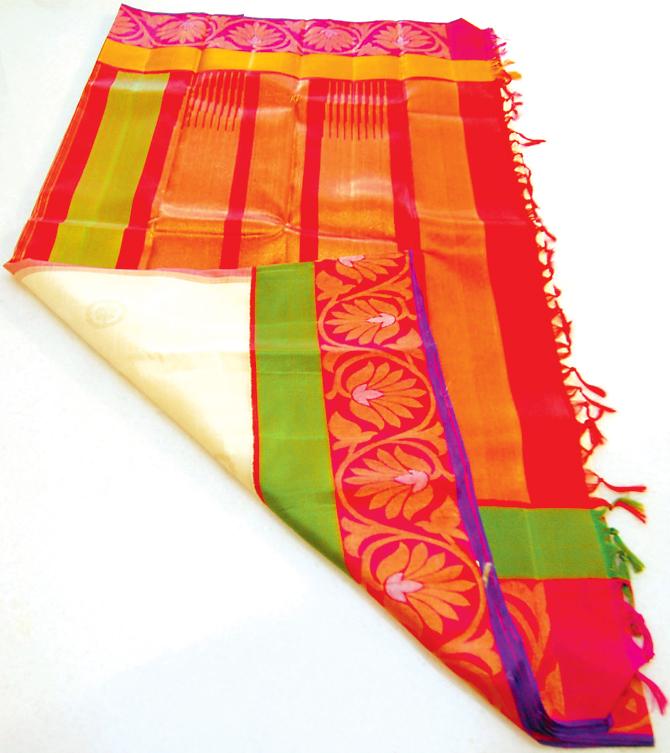A new store in Juhu offers contemporary saris made by traditional artisans using age-old techniques. They also revive heirloom saris to prevent them from being phased out due to the vagaries of time

We visited Vedaa Contemporary Weaves on their launch date and the place was abuzz with last-minute touch-ups. The 1,000 square feet store is tastefully decorated with shelves lined with saris, ornate sari blocks and framed heirlooms doubling up as wall art, statues of flying horses (a common motif in some of the saris), wrought iron chains with wooden handles for draping the saris, huge mirrors placed strategically around the store, plus a sofa, a bed and a dining table to give the place a homely vibe. There is a couture room as well with a range of saris that cost Rs 50,000 and above.
ADVERTISEMENT

The 1,000 square feet store showcases saris from around the country. Pics/Sameer Markande
Handloom revival
Vedaa Contemporary Weaves is the brainchild of the mother-daughter duo of Nandini Arya and Vedica Arya who specialise in reviving family heirloom and old handloom saris and have been in this field for eight years. At their signature store, they showcase revived handlooms as well as fusion saris that combine timeless art forms with contemporary designs. They also have a special range of saris made in 8 gm gold. All the saris come with an official GI certification vouching for the authenticity of the zari.

An off-white Kanjivaram sari in multiple weaves; it has motifs of elephants and horses
The Aryas source designs and spend time with traditional weaver families across India to recreate the original handlooms and some of the textiles take anywhere between one to three years, to fully recreate. They are open to custom-making saris as well. Some of their highlights include a range of Neon Kanjivarams, Patan Patola sari with larger motifs and a sari depicting the transition from dawn to dusk, among others.

Jamevar Benarasi in real zari
An eye for weaves
Speaking about her passion for reviving saris, Nandini Arya recalls that it was born out of her interest in all things textile: “I collected saris and had an eye for weaves, colour combinations and creativity.” Fascinated by the range of textiles found across India, she started travelling and meeting weavers (she still travels 20 days a month). Soon, she started reviving heirlooms and fusion saris. “However, the fusion is minimal; traditional elements are still retained,” she emphasises. The range of saris include Kanjivaram saris from Tamil Nadu, Benarasi saris from Varanasi, Patan Patola from Gujarat, and Paithani saris from Maharashtra, as well as khadi, single Ikkat saris, and fusion saris with combinations like Paithani and Benarasi, Ikkat and Kanjivaram, among others. They also offer select salwar suits, dupattas and scarves. Currently, custom-made saris contribute to 80% of their business. “That’s because tastes and styles differ from region to region. While in southern India, maroon and chocolate-coloured saris are preferred, in northern India, red and orange are the preferred colours. In Mumbai, neutral colours are the rage, as are lighter fabrics.”

A Kanjivaram sari with inter-locking weaves; it is a contemporary option to the Panetar saris worn at Gujarati weddings
The art of revival
In terms of reviving saris, she rates her success at just 70%, as it is a tough task to recreate their previous allure. “Like other craft forms, the techniques of making saris are often lost with time; if there are no craftsmen left, it is almost impossible to recreate an heirloom.

Nari Kunj Patan Patola done in an ink blue hue
A lot of research is also involved.” Interestingly, she cites labour costs as the reason why gold-embroidered saris are so expensive. “A traditional handloom weaver makes a maximum of six saris a year. The zari and the labour make up 50% of the cost,” she explains. The saris available at Vedaa Contemporary Weaves are made around the country at the artisans’ own workshops. “Each place has its specific colours and type of water, which impact the dyeing process, the texture and the weaving. So, textiles change with the land. And land changes every 12 km. One has to understand the handicraft before buying it,” she sums up. Prices start from Rs 5,000 and go up to several lakhs based on the intricacy of the work.
 Subscribe today by clicking the link and stay updated with the latest news!" Click here!
Subscribe today by clicking the link and stay updated with the latest news!" Click here!






